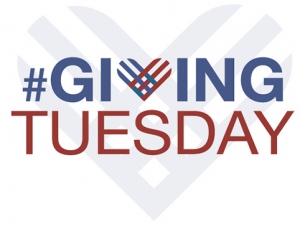One Year Later: The Growing Success of #GivingTuesday

#GivingTuesday analysis represents our first-ever guest blog. Chasity Cooper, from the MPA@UNC program at UNC School of Government, explores how 2013 #GivingTuesday results compare to 2012. I have yet to find any analysis of how increased donations on #GivingTuesday may produce decreased giving at year-end (and therefore no net gain in giving), but Chasity highlights valuable year-over-year trend lines. Check out below how the new “Giving Day” has rapidly grown in just one year. Thanks for this contribution Chasity…
The second annual #GivingTuesday kicked off on December 3, as nonprofits around the country offered a philanthropy-themed alternative to Black Friday and Cyber Monday. Nonprofits are increasingly looking to social media and crowdfunding to raise awareness of their mission and generate funding for programs. #GivingTuesday leverages that excitement and encourages users to show support by posting updates using the #GivingTuesday hashtag. This year, #GivingTuesday attracted 10,000 nonprofit partners compared to 2,500 in 2012 (the grassroots event’s inaugural year).
An infographic published by #GivingTuesday reports on December 3, 2013, an average of 186 tweets per minute used the #GivingTuesday hashtag, #GivingTuesday also had a reach of two billion individuals on Twitter and 300 million on Facebook that same day. This year, the average #GivingTuesday gift was $142.05, compared to $101.60 in 2012—a 40 percent year-over-year increase.
But what impact does #GivingTuesday have on individual organizations? Here are a few #GivingTuesday success stories:
- The Case Foundation teamed up with Six Degrees, Kevin Bacon’s charitable initiative, to create a matching donations campaign on the fundraising platform Crowdwise. The Washington Post reports the campaign raised more than $120,000, quadruple the expected amount.
- The citywide ‘Bmore Gives More’ campaign raised $5.7 million for 300 of the city’s nonprofits in just 24 hours on #GivingTuesday, exceeding the original goal of $5 million.
- Google and Mashable hosted their first-ever Hangout-a-thon, a 12-hour online event designed to highlight some of the world’s most innovative nonprofits.
- The United Methodist Church raised a record-breaking $6.5 million online on #GivingTuesday from nearly 11,000 donors in 34 countries.
- To support Wolverine Human Services, an organization serving Michigan’s at-risk youth, Eminem offered to match the first $100,000 in donations and used his vast Twitter network to spread the word. By end of the day on #GivingTuesday, the campaign had raised over $70,000 in donations, reports Nonprofit Quarterly.
- Fisher House Foundation, a network of comfort homes where military families can stay while a loved one undergoes medical treatment, raised $39,000 on #GivingTuesday, double the amount from last year, according to USA Today.
Despite these seemingly impressive numbers and stories, some nonprofit experts expressed skepticism about the true impact of #GivingTuesday’s social media blitz. Nonprofit fundraising veteran Joe Garecht of The Fundraising Authority, for instance, wrote a post discouraging nonprofits from participating because, among other reasons, it encourages “spot giving” over long-term donor retention and potentially crowds out a smaller organization’s message with the barrage of #GivingTuesday social media updates and fundraising emails. Michael J. Rosen, president of fundraising and marketing consulting firm ML Innovations, Inc. wondered if smaller nonprofits might be better served using their resources elsewhere and if the movement is truly acquiring new donors or simply changing
when they donate.
Even so, given the traction that #GivingTuesday has gotten in its first two years of existence, it’s likely that the movement will continue to grow and perhaps impact nonprofits in unexpected ways in the years to come.
Go to Blog Home





Add Your Comments
Reader Comments
0 comments